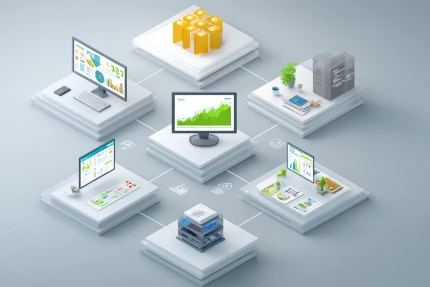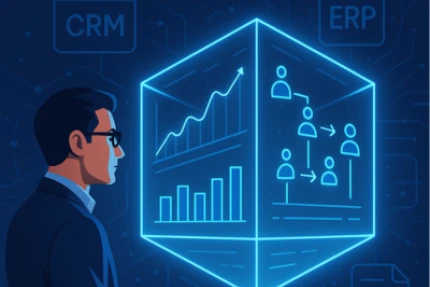
Forecasting ARR isn’t just about projecting next quarter’s sales and renewals, it’s about understanding the entire revenue engine: booked ARR, expansion ARR, downgrade ARR, retention risk, and subscription start and end dates. Leading SaaS companies are moving beyond top-down assumptions to create detailed ARR forecasts rooted in historical performance and forward-looking assumptions.
Here’s how to get it right.
Start with What You Know: New and Expansion Revenue
Accurate ARR forecasting begins with understanding your pipeline creation trends, average selling price, sales cycle duration, and historical conversion rates. These inputs should inform your assumptions, especially when forecasting new logo and expansion revenues.
From top-of-funnel (MQLs) to closed-won, your model should reflect each stage’s likelihood of converting. If you can adjust assumptions dynamically, such as changing your average deal size or sales cycle, you gain a more precise view of “gross revenue” likely to land in the next 12 months.
Don’t Overlook Renewals
Even with a thoughtful setup, data quality issues are inevitable. People miss fields. Typos happen. Workflows break. That’s why it’s critical to build in data quality flags and alerts.
Set up a system that can actively tell you when something looks off:
- Not accurately calculating available to renew (multi-year contracts don’t renew annually)
- Using flat renewal rate assumptions without segmentation
- Failing to track and manage renewal opportunities as part of their active pipeline
- Not accounting for downgrades
- Not accounting for price increases at renewal
Forecasting renewals means understanding not just churn risk, but downgrade probability and ensuring the right mechanics are in place. If you don’t have analytics on what’s available to renew, you’re flying blind on what’s at risk.
Add Intelligence with Machine Learning
Machine learning can help companies predict future performance based on historical behavior and patterns, filling in the gaps where traditional forecasting falls short. This can include:
- Predicting conversion probability for new and expansion deals
- Estimating renewal likelihood based on customer profiles
- Incorporating revenue-at-risk flags into renewals forecast
But it’s not magic. It needs clean and connected data to produce value. Aligning sales, RevOps, and Customer Success on standardized processes ensures ML models have what they need to generate meaningful insights.
Plan Short-Term in Detail, Long-Term with Assumptions
Most teams can forecast accurately 1-2 quarters out. Beyond that, forecasting moves from deal-based to assumption-based. You likely won’t have identified renewal or expansion opportunities for 2026, but you can model it.
To build a true long-range ARR forecast, you’ll need to layer in higher-level assumptions: growth by segment, product expansion, and renewal behavior based on historical patterns.
What Sets Leading Companies Apart
The best teams don’t just look at what’s already booked. They build a complete picture of ARR by managing:
- New & expansion pipeline – with cohorted, conversion rate-based forecasting
- Renewals – determine what’s available to renew, calculate renewal rates and downgrades
- Long-term assumptions – layer intelligently on top of short-term opportunity and account data
By combining historical performance, process discipline, and predictive intelligence, you can build a forward-looking ARR model that doesn’t just report the future, but helps shape it.
Curious how your team could level up forecasting? See how Discern helps SaaS companies unify pipeline, renewals, and assumptions into one clear, trusted model.



